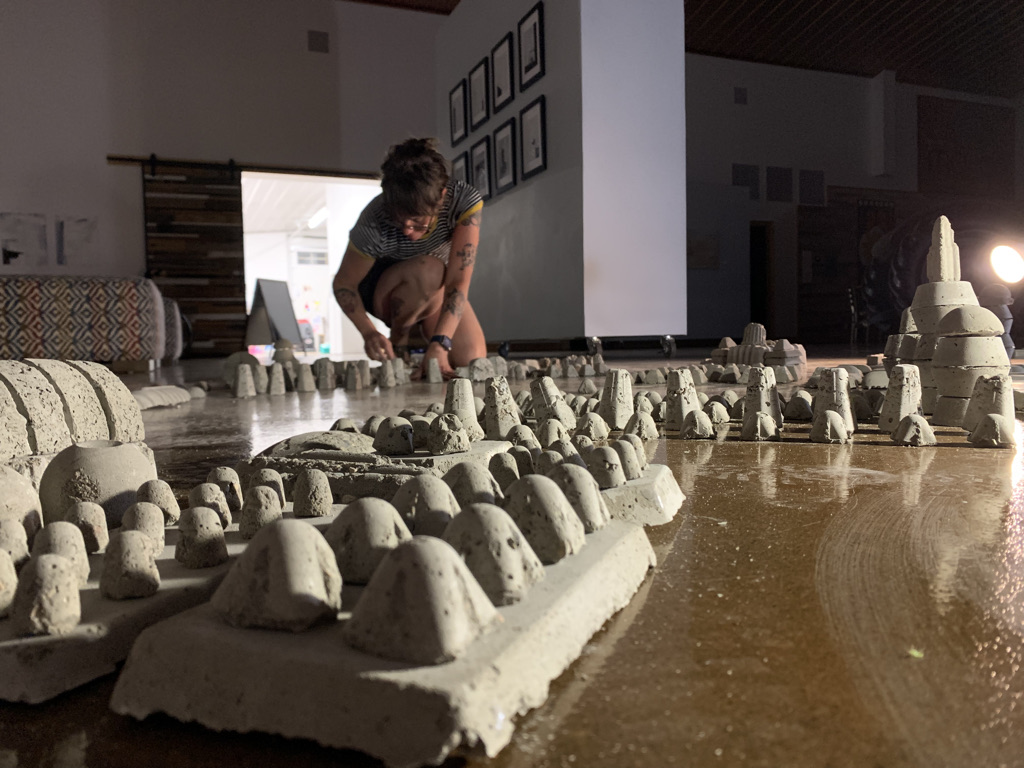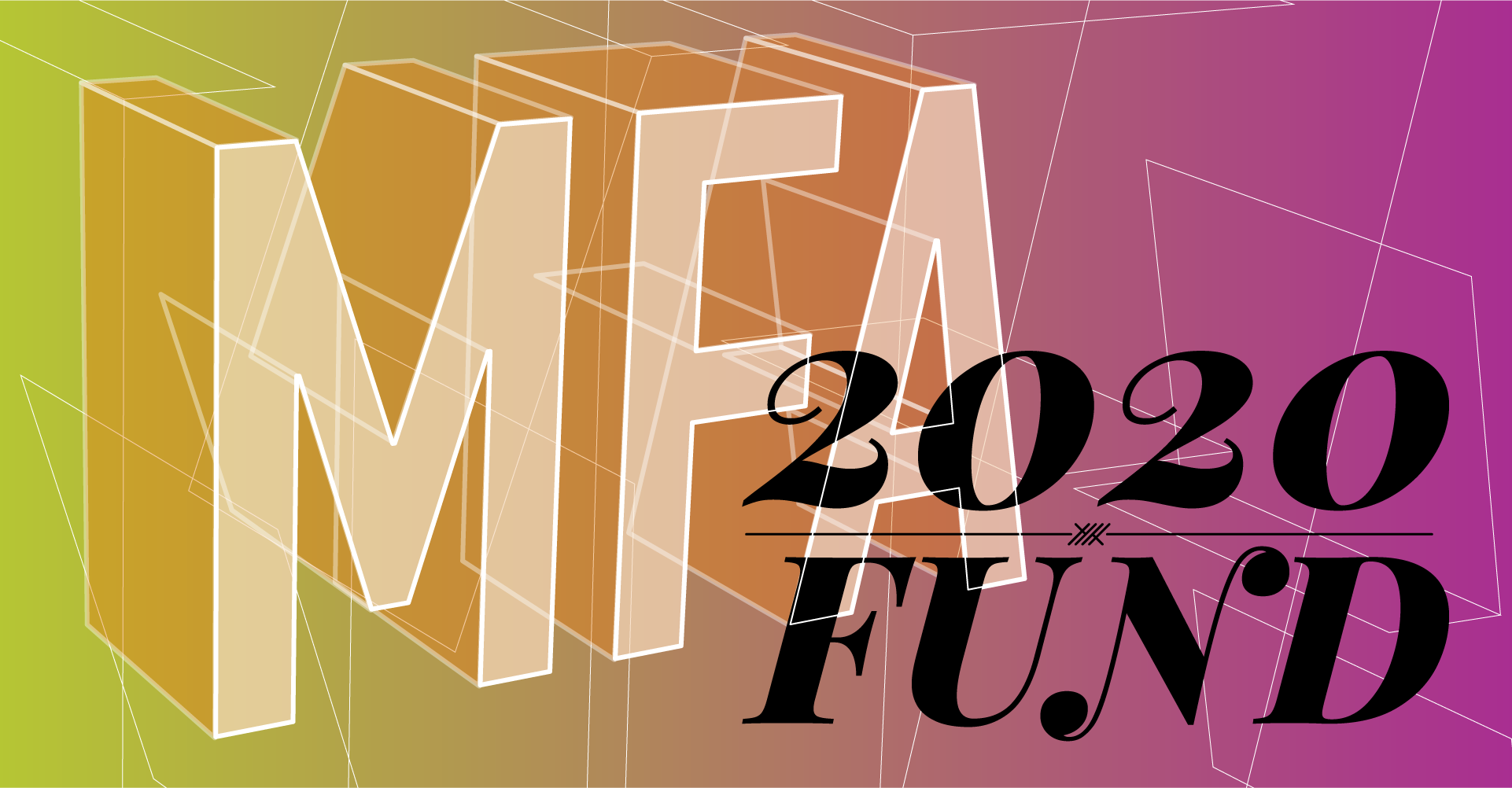This August we sent Heather Lamanno ’19 and Dan McAvey ’22 to our inaugural Art-in-Motion Residency, which is one of our funded Launch Programs. Art in Motion is located on the Lake Wobegon trail. It builds unity and art appreciation through incubating artists and their art, teaching creative students of all ages, hosting an open community space, and serving food and beverages.
This 2-week residency is a great opportunity for connecting with nature and new communities, reflection, and creativity. Check out these students’ responses to interview questions below!
What were some of your goals headed into the residency?
HL: I wanted to make as much work as possible in the time I had at Art in Motion. Currently in my practice, I am shifting and experimenting with content and use of acrylic medium. I wanted to focus on getting out of my comfort zone, and giving myself permission to make work that was uncomfortable and clunky. I also planned to focus on responding to the natural environment surrounding art in motion. Natural elements are not something that normally exist in my work, so I thought that would help to push me in a new direction as well.
DM: A primary goal for this residency was to further develop a practice of plein air painting by engaging artistically with the landscape. To do so, I made a commitment to paint outside every day. As a result, I was able to take in the environment with all my senses and to notice the subtle changes in the landscape. Another goal was to immerse myself in the experience of the residency: to withdraw from the commitments of my regular, daily life and focus on making art. As a parent, I was fortunate to be able to fully immerse in the residency because my spouse supported me being away for two weeks.
What did your average day look like during the residency program?
HL: During art in motion specifically, there was a high level of stewardship involved. Patrons of the cafe were encouraged and invited to visit us in the studio for conversations with “real artists” and the cafe was open from 8-8pm. After being there for a day, I realized I would have to shift my practice and plan to work in the evenings. So I would spend most of the day picking away at work that I could do while being sporadically engaged with the public. And then I would complete work that required more uninterrupted concentration from 10-2am every night, sometimes longer so I could accomplish my goals.
DM: 9:00 am Breakfast at guest house
10:00 am Biking on Lake Wobegon Trail for plein air painting
1:00 pm Return to Art in Motion for lunch at Boho Café
1:30 pm Work on art in studio at Art in Motion, interact with visitors
4:00 pm Hike around property with mini-easel for plein air painting
6:30 pm Dinner at Boho Café, at guest house, or in town
8:00 pm Return to studio at Art in Motion to work on art
12:30 am Stargazing
1:00 am Bed
For those who haven’t done residencies before, there can be a lot of questions about logistics. Can you talk a little about how you transported your practice to a new location?
HL: When thinking about transporting your practice to another location, think about your practice as a fellow traveler- what do they need in order to function in a new place? Then be sure to examine the cargo space you have within your means of transportation. Pack everything up in a trial run, to make sure it will all fit. Use packing that is reusable such as plastic bins, so repacking will be easy and strategic. Ask a lot of questions before you go in light of the materials you use in your practice.
For example, I am a painter and work with concrete sculpture. I made sure to ask if there were tables that could get dirty, an accessible water source outside the building, if I could hang work on the walls in the studio, and made sure to bring my own glass palette for painting. If any part of your practice requires special ventilation or a specific environment for creation, be sure to speak about this with the folks at the residency prior to your arrival, and be prepared to possibly alter your practice for your visit. Also, be polite and courteous as a guest, but also remember that you were probably “awarded” this residency. Don’t be afraid to ask for things and accommodations you might need. The worst anyone will say is no!
DM: I began planning for the residency as soon as I was accepted. The process involved first trying to identify potential problems and then brainstorming solutions. Because the residency was situated on a bike trail, I wanted to find a way to transport my art supplies into the prairie via bicycle. I worked with staff at MCAD’s 3D shop to design and build a cargo trailer out of my daughters’ outgrown crib and bike trailer.
Knowing that I wouldn’t only be painting on the bike trail, I also designed and built a smaller easel that I could fit into a backpack to take on hikes. I made a list of all the paints and brushes I might need and ordered any I didn’t have well in advance. I prepared dozens of painting panels in various sizes so that I would not run out of surfaces to paint on while working at the residency. To pack supplies and bring them to the residency, I collected plastic storage bins and packed them according to the function of their contents. I was fortunate to be traveling to the residency by car, so I didn’t need to worry too much about packing lightly.
It was also important to identify what it is that I needed to be comfortable while away from home for two weeks and what parts of my daily routine did I want to maintain. While meals were included, I made sure to bring favorite snacks and breakfast cereal to last through the trip. I also made sure that I had enough supplies like medications, bug spray, and sunscreen for the time I would be away. It was helpful to think about both what I would need to be effective as an artist and also what I would need to be comfortable as a person (so that I would not be distracted from making art).
What were your takeaways about your work, career, or practice?
HL: My takeaways about my career and my practice were grounded in gaining a certain level of confidence and understanding about my goals and the content of my work, and my ability to connect with a non-art audience about the methods and modes within contemporary fine art. No matter what others “get” about what I am doing, giving myself credit and permission to do what’s right for my practice was a huge step forward for me.
While at the residency, I was making new work in the public eye, which felt very vulnerable. But through talking with patrons and hearing a variety of responses to the work, I realized this really is a healthy place to be. Although as artists we should consider the viewer, it’s really important to remember to follow your gut, and make decisions about your work for yourself first, and for others after.
DM: I found that I could sustain a rigorous commitment to making art in a new location. I also found that my work developed over the span of the residency by trying new ideas and fine-tuning my processes. Whether on location or in the studio, there was frequently an audience while I was painting. Talking with people about my work while I was making it created some anxiety in the early days but became a fun part of the process by the end.
Though the paintings I made were small and transportable, my whole body was engaged in making work during this residency. Using myself to shuttle my art supplies along the bike trail both expended and created energy in ways that invigorated and excited my art. The rhythmic nature of bicycling was meditative and helped me to be in tune with my surroundings before setting up to paint.
While no two days were exactly the same, I found that establishing a daily rhythm was helpful to my productivity during residency. Getting outside to make work in the morning ensured that I was starting my day constructively, which established a positive tone for the rest of the day.
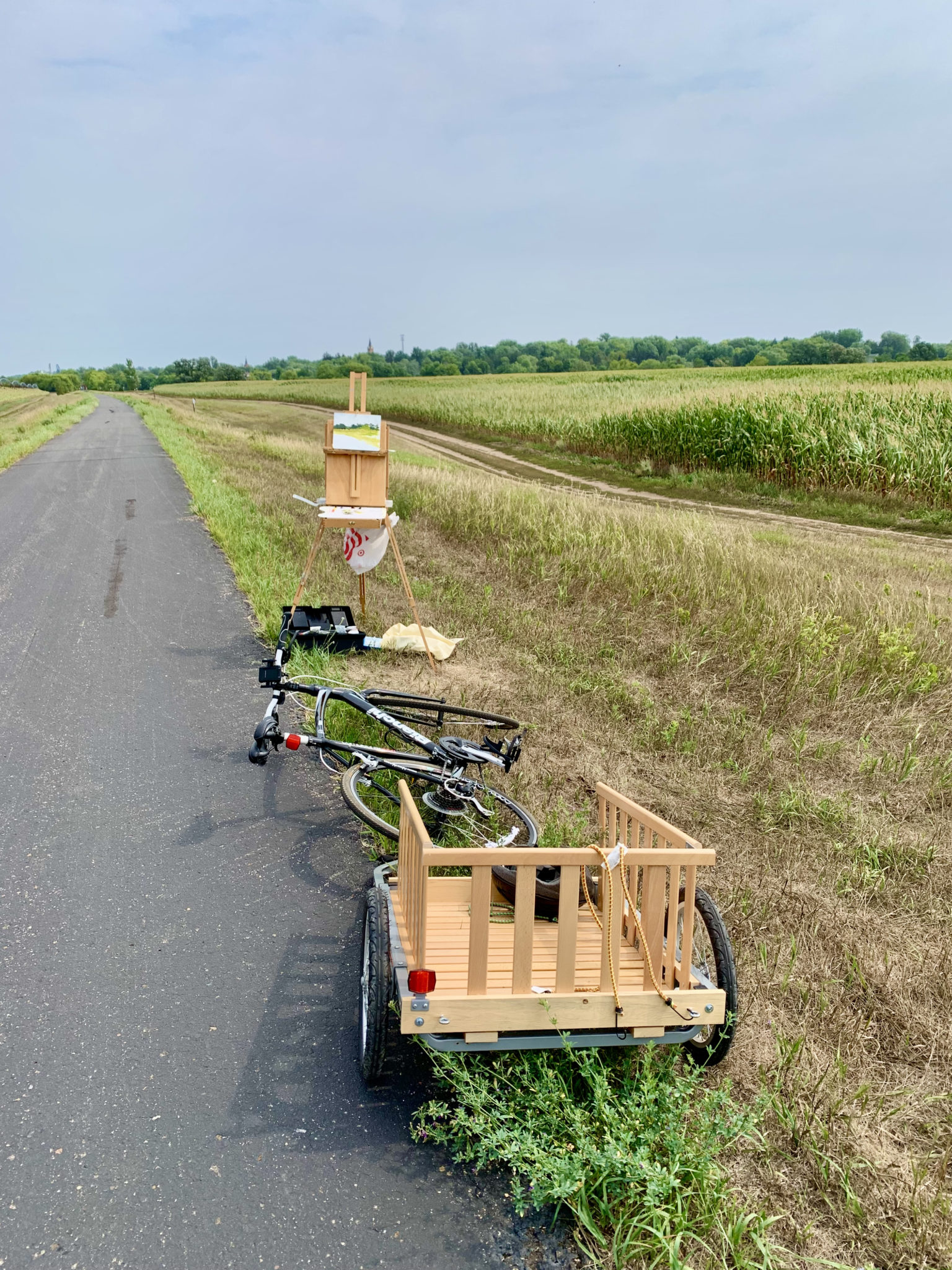
Dan McAvey '22 during Art in Motion Residency
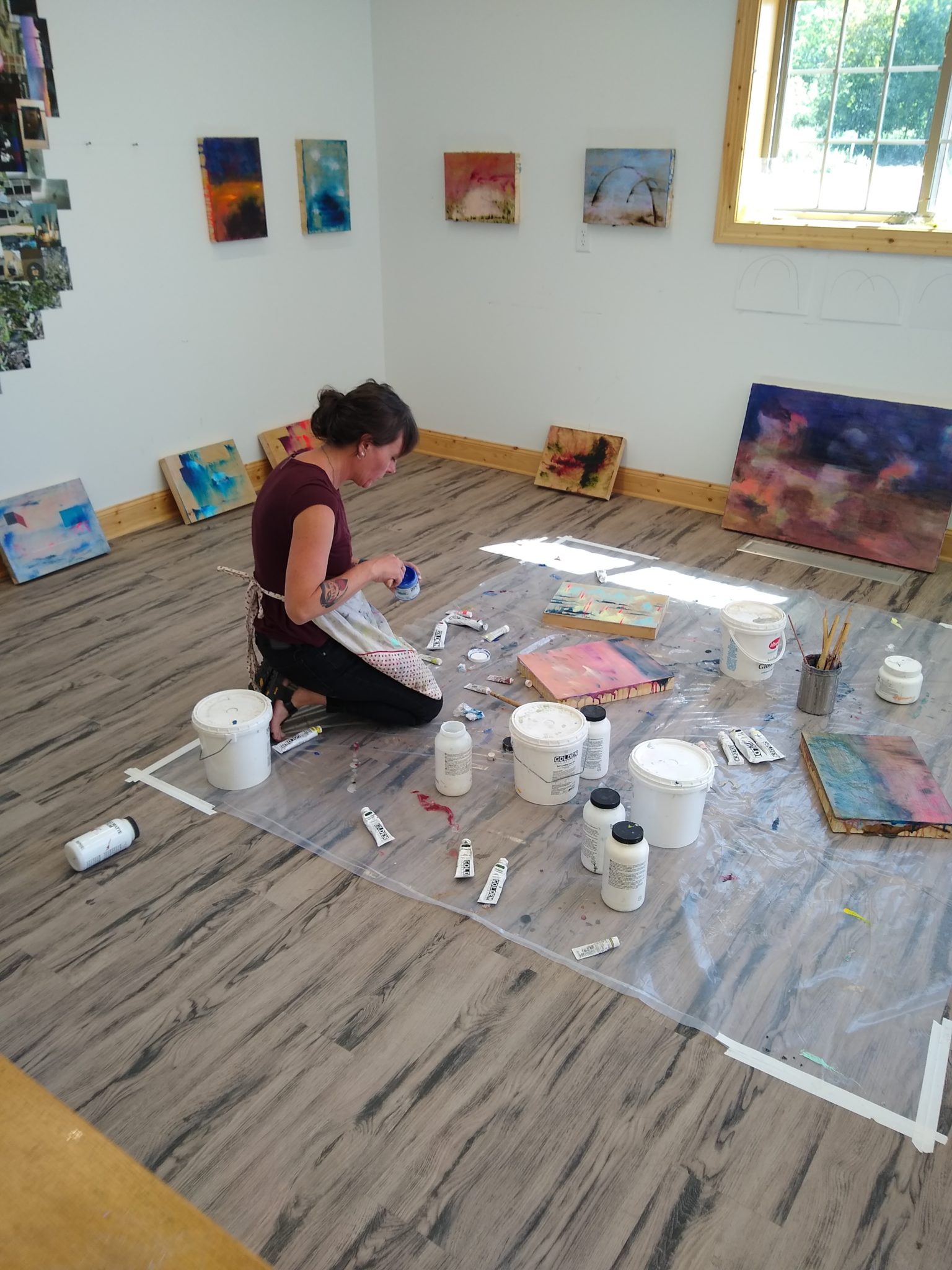
Heather Lamanno '19 during Art in Motion Residency
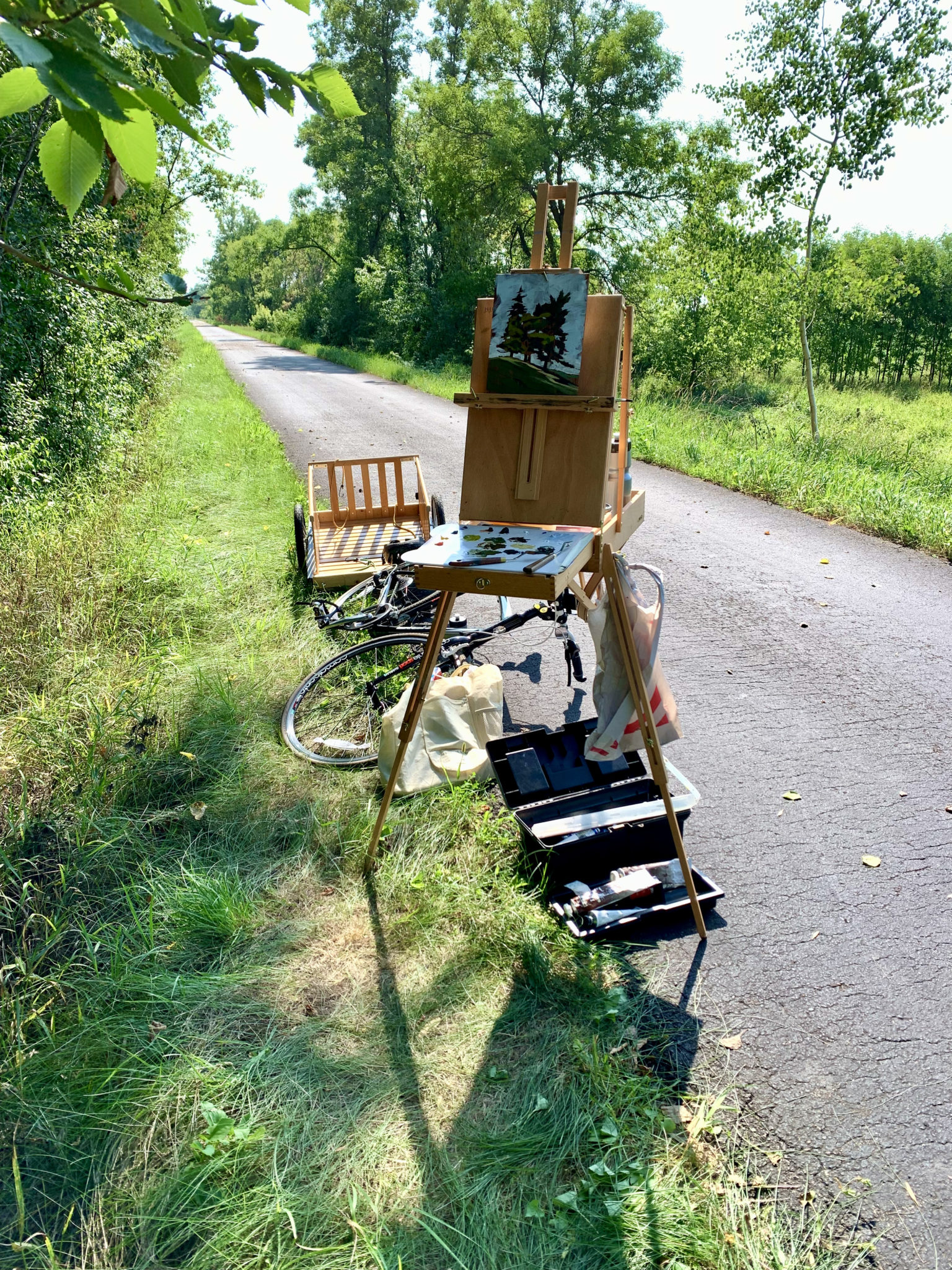
Dan McAvey '22 during Art in Motion Residency
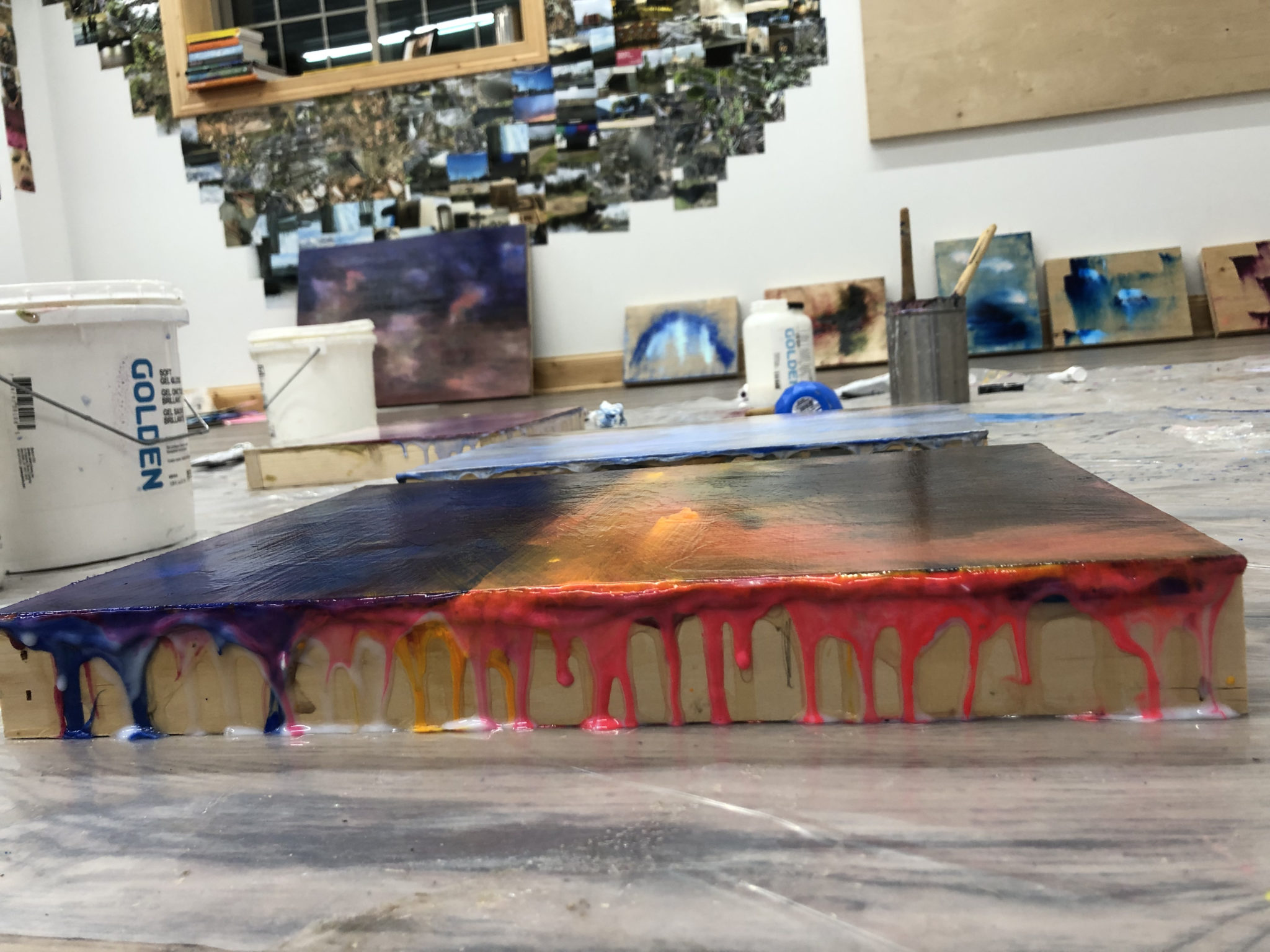
Heather Lamanno '19 during Art in Motion Residency
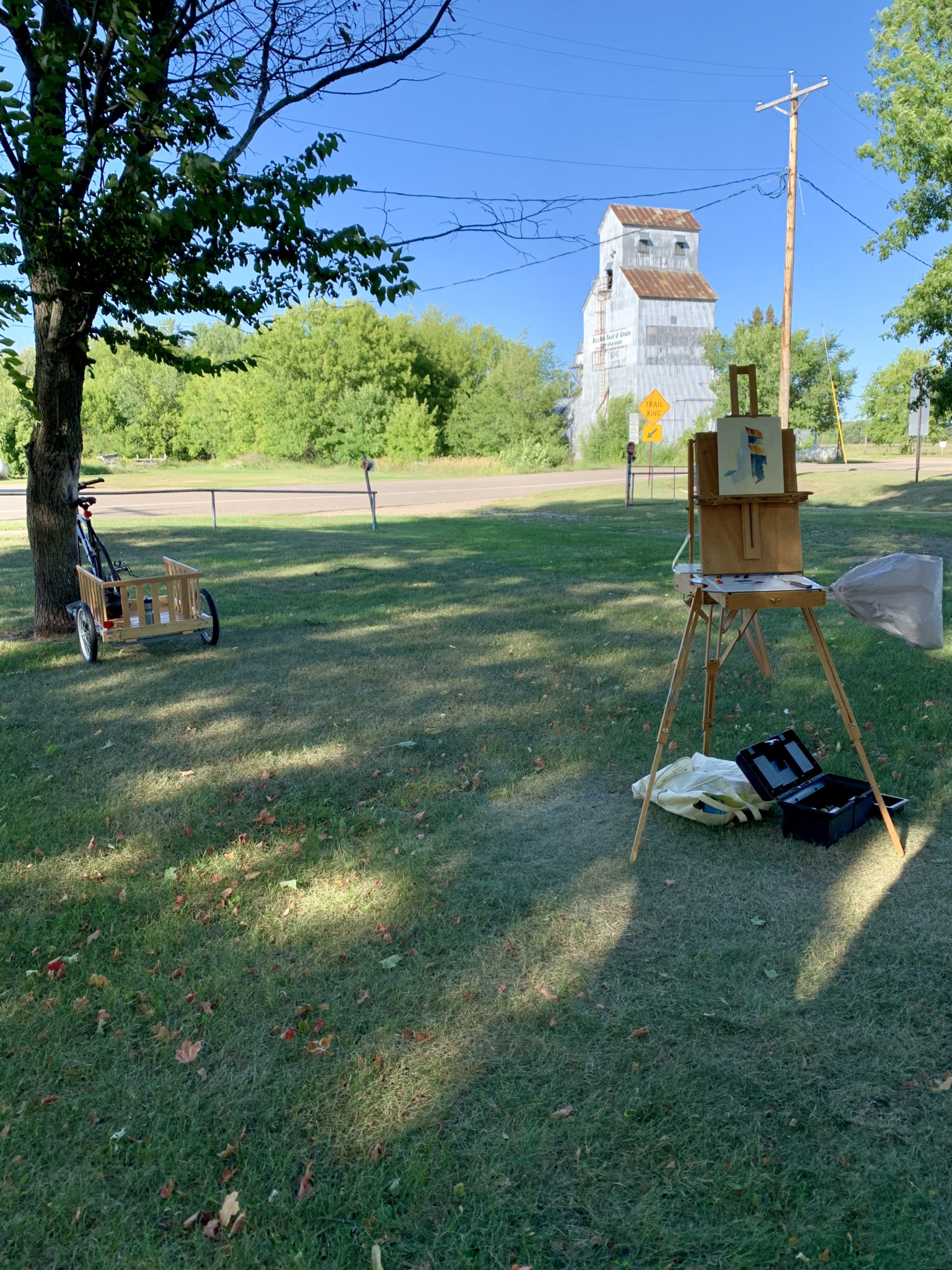
Dan McAvey '22 during Art in Motion Residency
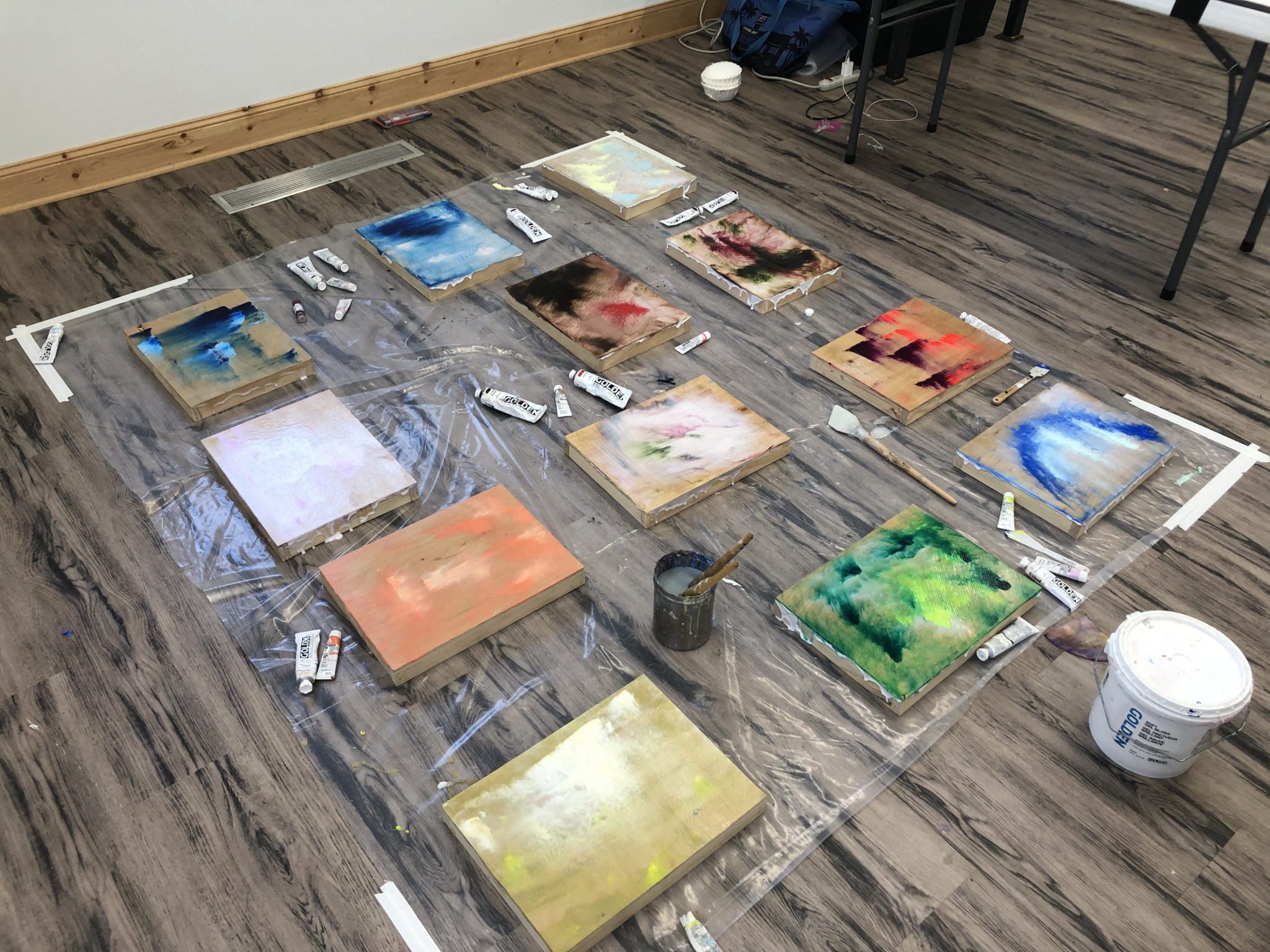
Heather Lamanno '19 during Art in Motion Residency
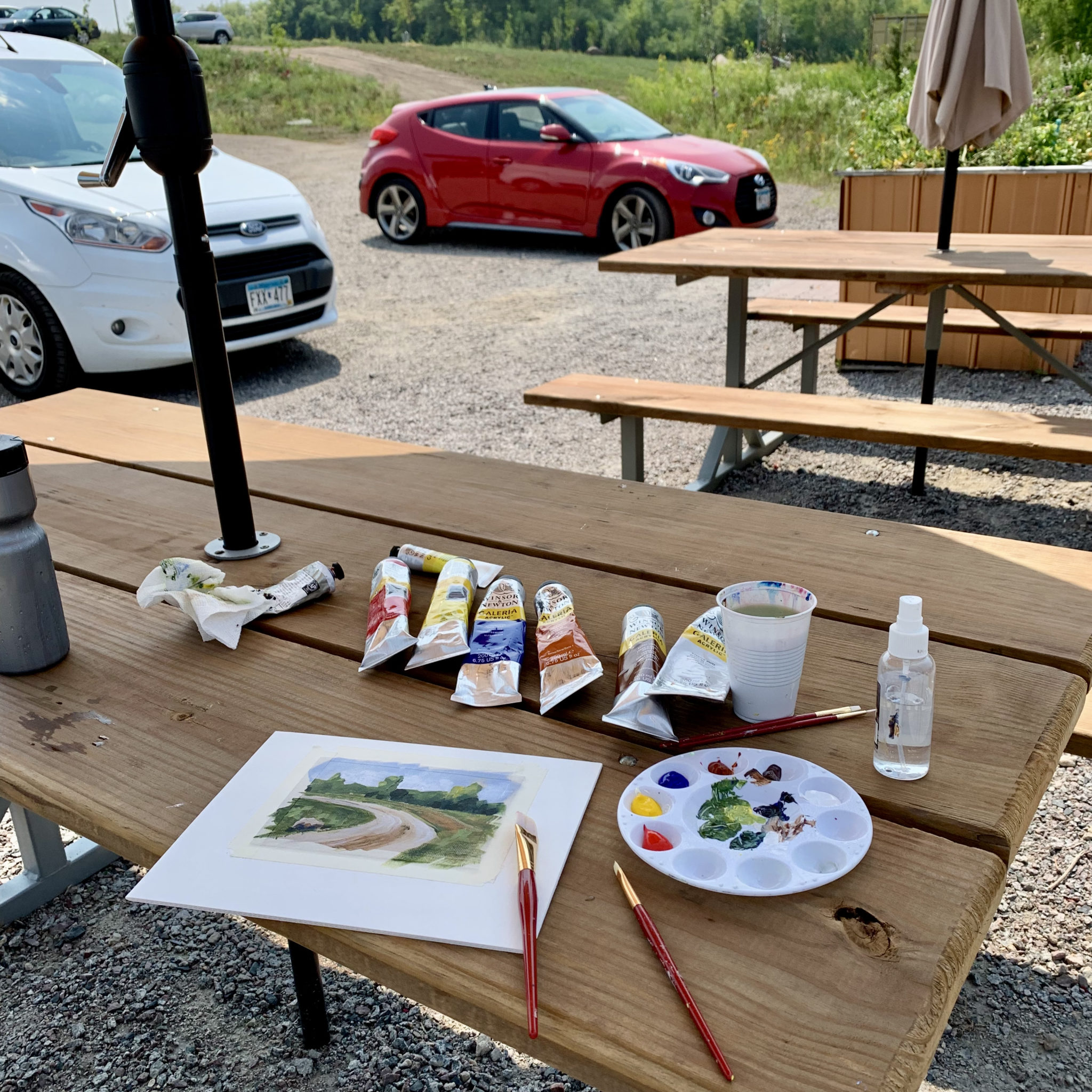
Dan McAvey '22 during Art in Motion Residency


